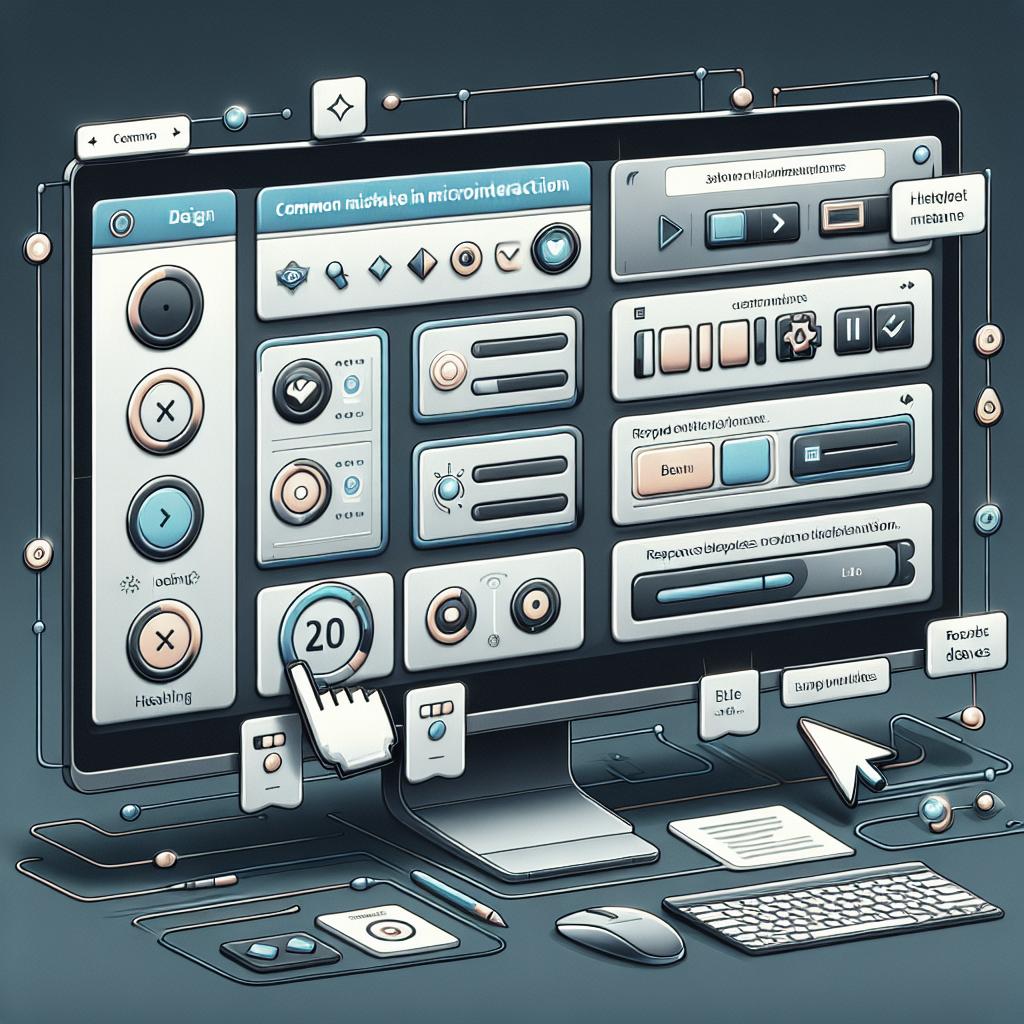Common Mistakes in Microinteractions
Microinteractions, the subtle moments of engagement between the user and the digital interface, can significantly elevate the user experience when executed well. However, many designers fall into common pitfalls that can compromise their efficiency and appeal. In this blog post, we will delve into frequent mistakes seen in microinteractions and explore actionable steps designers can take to improve them. From trimming unnecessary elements to creating seamless, unified movements and ensuring a solid fundamental design, we guide you through essential considerations to enhance your microinteraction design effectively.
Design Action Step — Look for Fat to Trim
In the world of microinteractions, simplicity is key. The primary goal is to enhance user engagement without overwhelming them with unnecessary details. When designers incorporate too many elements into a microinteraction, it can backfire, leading to a cluttered experience that detracts from usability. Always assess whether each detail serves a functional purpose or if it is merely adding visual noise.
Streamlining your design involves critically evaluating each component. Ask yourself if the animation details are necessary or if they only serve to muddy the waters, increasing cognitive load. Remember that every element should contribute to a smooth and intuitive user journey. If it’s not critical, consider trimming it down to create a cleaner and more focused interaction.
Design Action Step — Keep the Narrative Tight and Clean
A microinteraction should tell a story—no matter how brief. Whether it communicates a success, an error, or draws attention to a specific feature, the narrative needs to be direct and instantly understandable. Users should be able to consume this narrative almost subconsciously as they interact with your design.
To maintain a tight narrative, eliminate ambiguity and ensure that the interaction conveys its message clearly from start to finish. Avoid unnecessary resistance or steps that might leave the user puzzled. In this way, every microinteraction becomes an integral part of the overall story, contributing to a seamless user experience.
Design Action Step — Make Sure Your Micro-Interactions Occur as a Single Unified Movement
Consistency and fluidity are critical elements in microinteraction design. When elements activate at different times or with inconsistent pacing, users can become confused and disoriented. Disjointed actions can break the flow, making users question whether they performed the correct action or if something went wrong.
A well-designed microinteraction should unfold as a single, cohesive movement, providing a seamless experience where the user can anticipate the outcome based on the action they take. This not only improves usability but also enhances the sense of control and satisfaction users feel as they navigate through your interface.
Design Action Step — Ensure Your Design Makes Sense Before Enhancing it with Animation
Animation should never be a substitute for good design. Before adding animated elements, it’s vital to ensure that your base design is logical and functional on its own. A critical examination of the design should answer whether users can understand and navigate the interface without any additional motion or effects.
Enhancing an already solid design with animation should only serve to enrich the user experience. When used judiciously, animation can guide user focus, deliver feedback, and create a satisfying sense of progression. However, it should augment—rather than distract from—the core functionality and clarity of the design.
Design Action Step — Be Ruthless in Your Attention to Detail
An eye for detail can distinguish a great microinteraction from a mediocre one. It is imperative to scrutinize every aspect of your design and ensure everything operates as intended. Each frame of animation, every transition, and timing should be perfect and serve to enhance the user experience.
Consider factors like timing, feedback, and responsiveness, leaving no stone unturned in your quest for precision. By being meticulous, you ensure that your design is polished, providing a professional and enjoyable interaction. This level of dedication not only improves user satisfaction but also reinforces your brand’s reputation for quality.
Next Steps
| Design Action Step | Key Consideration |
|---|---|
| Look for Fat to Trim | Remove unnecessary elements to reduce cognitive load and simplify the user experience. |
| Keep the Narrative Tight and Clean | Ensure your microinteraction tells a clear story, eliminating any ambiguity. |
| Make Sure Your Micro-Interactions Occur as a Single Unified Movement | Ensure consistency and fluidity to maintain user orientation and satisfaction. |
| Ensure Your Design Makes Sense Before Enhancing it with Animation | Check design logic and functionality without relying on animation. |
| Be Ruthless in Your Attention to Detail | Polish every aspect of your microinteraction for precision and professionalism. |
